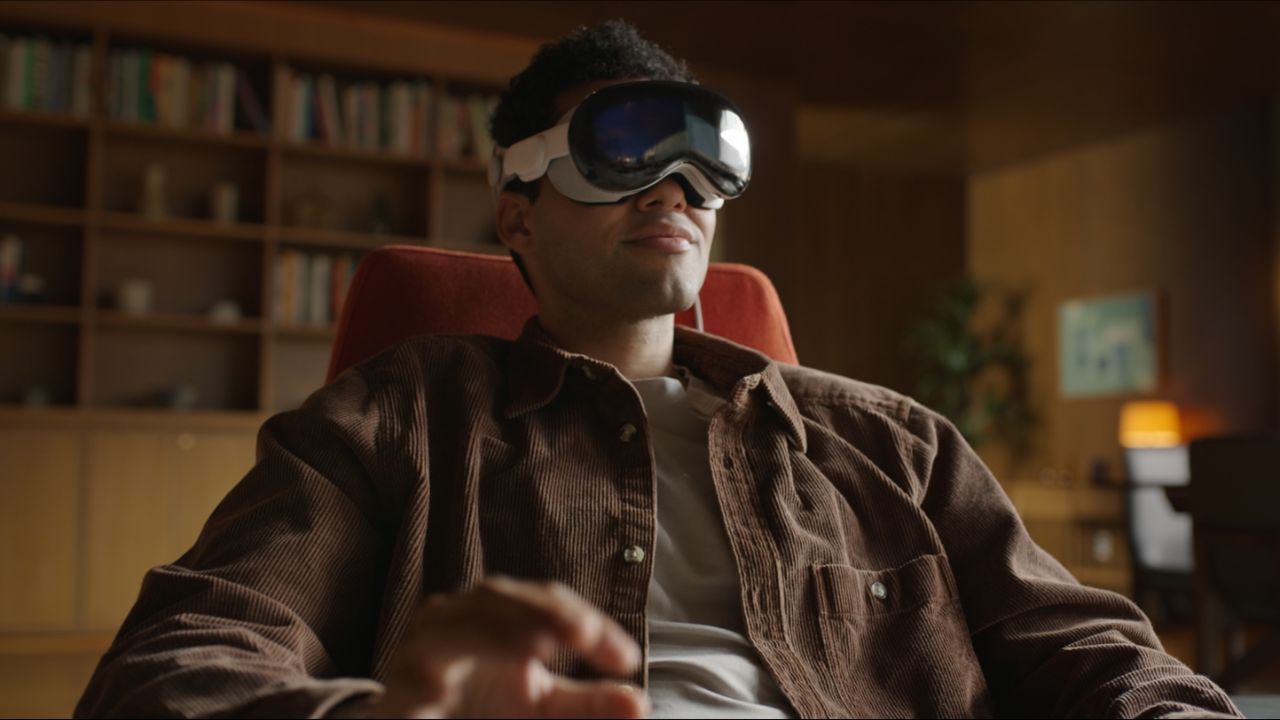Apple Vision Pro Launch Date: Vision Pro, Apple’s eagerly anticipated Augmented Reality headset, was eventually unveiled at the WWDC 2023 Conference on June 6. Apple has announced the release of Vision Pro, a product that has been in development for several years and features sophisticated technology that justifies its high price. In addition, the company has unveiled visionOS, a new operating system, as well as a variety of applications that will be compatible with visionOS and the Vision Pro upon release.
Apple has also created a simplified guide that contains all the information about Vision Pro and visionOS, making it simpler to keep track of everything. Having said that, let’s learn more about the device that will immerse you in spatial computing.
How does Apple Vision Pro work?
The Apple Vision Pro headset combines the actual and virtual worlds. Apple asserts that it is the most immersive and powerful consumer electronics device ever created.
Vision Pro is a mixed-reality headset that enables users to interact with a three-dimensional space containing both actual and digital elements. It does not require controllers, instead relying on your hands, voice, and vision for operation. The headset utilises high-quality hardware, including advanced Apple Silicon, to accomplish this functionality.
According to the company, Vision Pro has been in development for several years, making it distinct from other mixed reality products. This spatial computer creates a realistic virtual environment while allowing users to remain in the real world.
Apple Vision Pro: Cost and Release DateThe Apple Vision Pro is a premium product with numerous features. Therefore, its high price is comprehensible.
Apple will release the Vision Pro headpiece in the U.S. at the beginning of 2024 for a price of $3,499. Vision Pro will not, however, be available to the global market until late 2024.
Apple Vision Pro – Appearance and Design
Apple’s Vision Pro product has the same sophisticated and refined design that Apple’s customers have come to appreciate. It utilises a variety of materials, including glass, steel, and fabric, to meet its aesthetic and quality standards.
The front of the headgear is composed of a single piece of lens-shaped and polished glass. The cameras and sensors of the headset use this information to comprehend the actual world. The glass is affixed to a face-hugging frame made of aluminium alloy.
The Vision Pro headset has an immersion-controlling switch on its top and a crown on its right side. Thanks to the click-like enclosure on its right side, its modular design allows for a customised fit. Vents on the alloy frame allow air to circulate and improve overall comfort.
The Vision Pro headset has a headpiece constructed from a single piece of 3D knitted fabric that is comfortable, breathable, and stretchable. The headset’s symmetrical design makes it comfortable to wear.
The Apple Vision Pro has a slot on the left side of its bottom for a battery cell that is connected to the headset via a cable. Using visible light, the wire connects to the headpiece. Other notable Apple Vision Pro features include:
Full-Scale Immersive UI Environments for Apple Apps Eliminate Distractions
A Completely Controller-Free SystemEyesight Function of Vision Pro
The “Eyesight” feature of the new Apple AR headset allows users to remain aware of their surroundings. When someone approaches a Vision Pro user, the display becomes transparent so that both parties can see each other.
Additionally, Eyesight provides visual cues to others regarding what the user is gazing at. Eyesight differs from Meta Quest’s passthrough in that it enables the headset wearer to see both the virtual and real environments simultaneously and in greater detail, whereas passthrough only dims the display.
What’s New with the Operating System Visions?
The hardware of the Apple Vision Pro is impressive, but its software is wholly unique. It operates on the new visionOS, an operating system designed particularly for the low latency requirements of spatial computing.
Apple’s Revolutionary Super Products and Software Updates: All Features Listed Here
What exactly is the Apple Vision Pro Display?
Although Apple did not provide specific information regarding the Vision Pro’s displays, it is believed to utilise micro-OLED technology. Apple asserts that this technology can put 23 million pixels into two displays, which are approximately the size of a postage stamp. Despite their compact size, these displays offer wide colour gamut and high dynamic range, which, according to Apple, results in a higher resolution for each eye than a 4K television.
As shown in the reveal, the Apple Vision Pro features custom catadioptric lenses that provide exceptional precision and clarity. It is powered by Apple Silicon, which will be discussed in greater detail later, but glasses-wearing users may still use it. Apple and ZEISS Optical Inserts have collaborated to assure accessibility and clarity for glasses wearers.
Specifications for Apple Vision Pro Audio
Contrary to expectations, the Vision Pro is not equipped with a large number of speakers for an immersive audio experience. Instead, only two amplified drivers within each audio capsule next to each ear accomplish this.
These drivers collaborate with the shape of the user’s cranium to deliver a spatial audio experience. This indicates that you will perceive it even without complete surround sound. In addition, Apple employs Audio Ray Tracing technology, which intelligently detects your surroundings and provides a pleasurable and uniform audio experience.
Chipset and Configuration
Apple Vision Pro’s advanced technology necessitates a great deal of computational capacity to eliminate any delay. Apple has met this challenge by integrating the M2 Chip with a new R1 chip, thereby revolutionising the MR industry.
The M2 chip manages computational duties and keeps the headset comfortable and cool. The R1 processor processes inputs from the headset’s twelve cameras, five sensors, and six microphones. The R1 processor was designed specifically for this purpose.
The chip has a remarkable low latency of 12 milliseconds and transmits new images to the display. Apple claims that this latency is eight times quicker than an eyeblink. A single charge of the Apple Vision Pro’s high-performance external battery lasts up to two hours. When the device is brought in, it can function for a full day.



